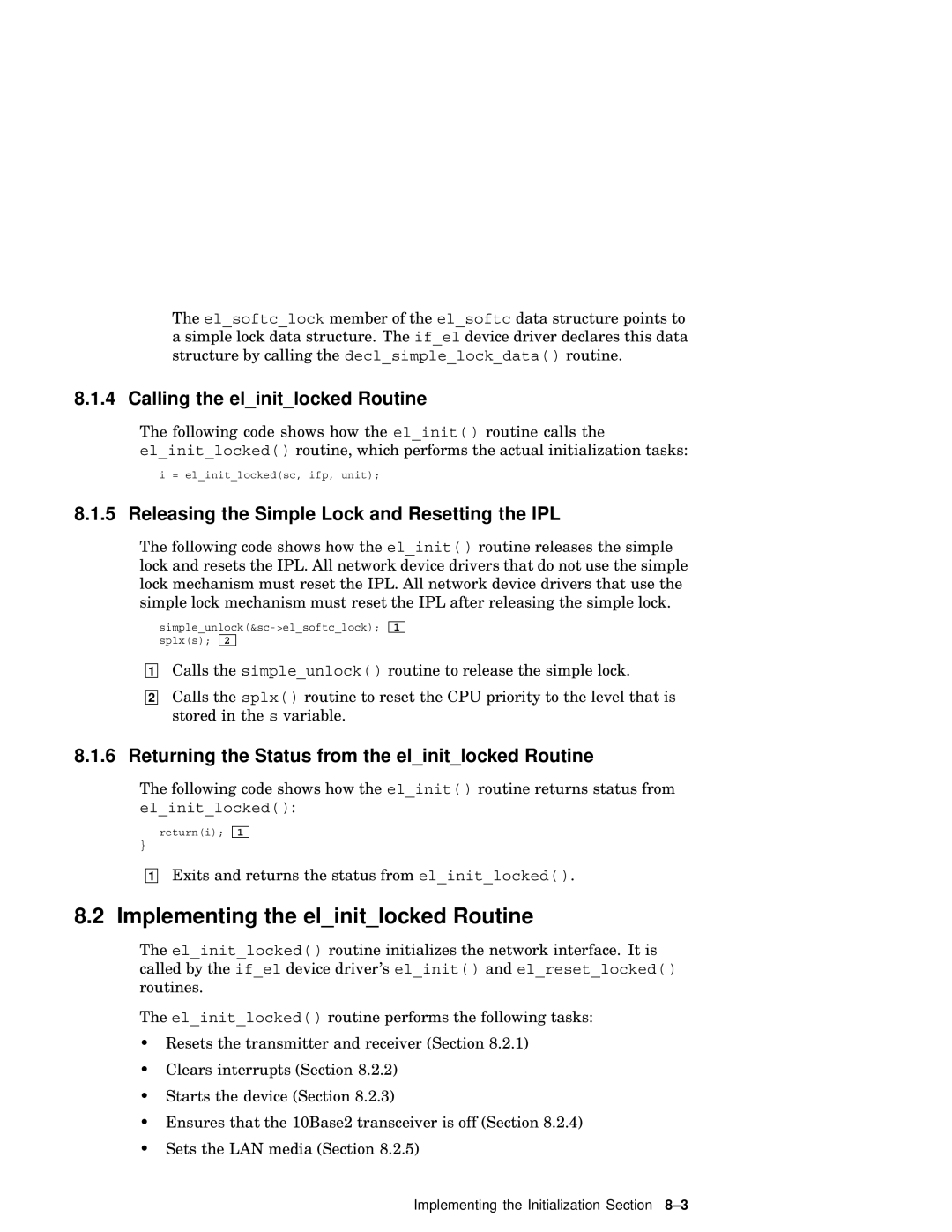
The el_softc_lock member of the el_softc data structure points to a simple lock data structure. The if_el device driver declares this data structure by calling the decl_simple_lock_data( ) routine.
8.1.4 Calling the el_init_locked Routine
The following code shows how the el_init( ) routine calls the
el_init_locked( ) routine, which performs the actual initialization tasks:
i = el_init_locked(sc, ifp, unit);
8.1.5 Releasing the Simple Lock and Resetting the IPL
The following code shows how the el_init( ) routine releases the simple lock and resets the IPL. All network device drivers that do not use the simple lock mechanism must reset the IPL. All network device drivers that use the simple lock mechanism must reset the IPL after releasing the simple lock.
splx(s); 2
1
1
2
Calls the simple_unlock( ) routine to release the simple lock.
Calls the splx( ) routine to reset the CPU priority to the level that is stored in the s variable.
8.1.6 Returning the Status from the el_init_locked Routine
The following code shows how the el_init( ) routine returns status from el_init_locked( ):
return(i);
}
1
1
Exits and returns the status from el_init_locked( ).
8.2 Implementing the el_init_locked Routine
The el_init_locked( ) routine initializes the network interface. It is called by the if_el device driver’s el_init( ) and el_reset_locked( ) routines.
The el_init_locked( ) routine performs the following tasks:
•Resets the transmitter and receiver (Section 8.2.1)
•Clears interrupts (Section 8.2.2)
•Starts the device (Section 8.2.3)
•Ensures that the 10Base2 transceiver is off (Section 8.2.4)
•Sets the LAN media (Section 8.2.5)
Implementing the Initialization Section
